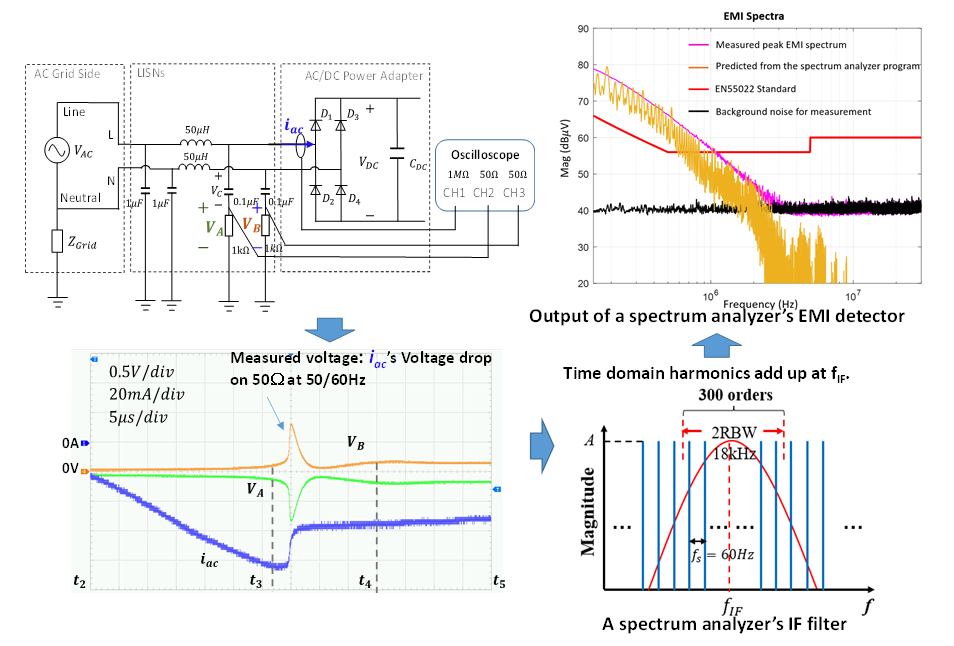Investigation and Reduction of EMI Noise Due to the Reverse Recovery Currents of 50/60 Hz Diode Rectifiers
Authors: Zhedong Ma; Yiming Li; Shuo Wang; Honggang Sheng; Srikanth Lakshmikanthan
Extended Abstract:
Alternating current (AC) / direct current (DC) power converters with DC-bus filters can achieve high power density, however, it was found in this paper that the reverse recovery currents of the 50/60 Hz diode bridge can lead to significant electromagnetic interference (EMI) noise violating EMI standards above 150kHz. This paper analyzed and quantified the mechanism of the EMI generation due to the reverse recovery currents of the 50/60 Hz diodes. It was found that although the reverse recovery of the 50/60 Hz diode bridge repeats at a frequency of 50/60Hz, the EMI can be very high above 150 kHz due to the operating principle of electromagnetic compatibility (EMC) spectrum analyzers. Since the adjacent harmonics have a 50/60 Hz distance, there are 360/300 orders of harmonics due to 50/60Hz reverse recovery currents within twice 9kHz resolution bandwidth (2RBW=18kHz), these harmonics stacked up in the time domain at the output of the intermediate frequency (IF) filter, and the envelop detector catches the increased amplitude and feeds it to the peak, quasi-peak, and average EMI detectors, leading to high measured EMI above 150kHz. Two techniques were proposed to reduce the EMI due to the reverse recovery of the diode bridge. The analyses were validated by either simulations or experiments.

Additional information:
The work was supported by Google Inc. This research work and the authors are associated with the Power Electronics and Electrical Power Research Lab (PEEPRL), Department of Electrical and Computer Engineering, University of Florida. For more information on our research projects and publications, please visit: https://peeprlgator.github.io/Shuo.Wang/index.html.

